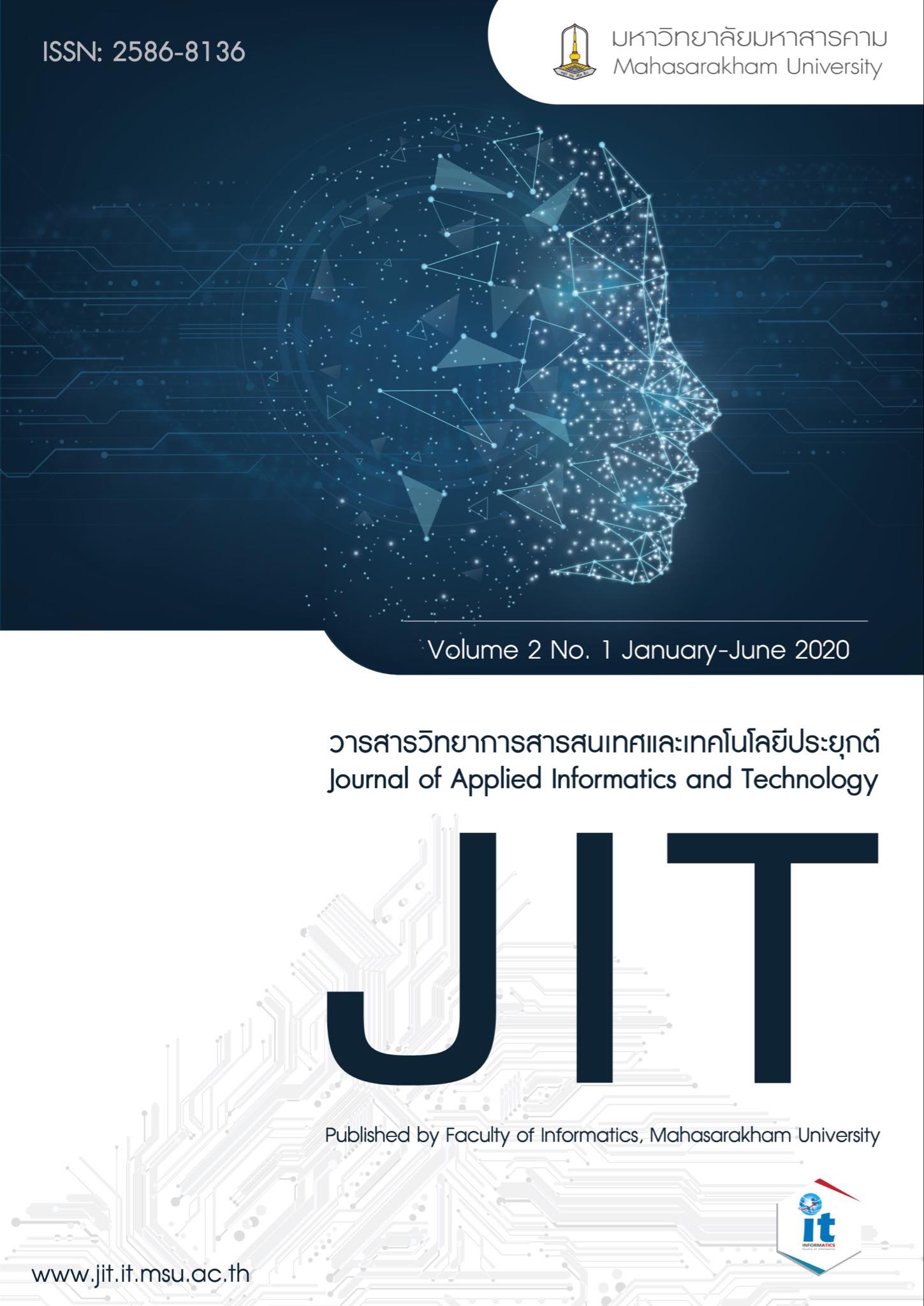Aquaman the Movie, Through the Lens of Feminists
Main Article Content
Abstract
The objective of the current article is to analyze the movie, Aquaman (2018 film), through feminism and social progressivism. The negative light shown in this film is that most characters believed in patriarchy, even for the main female protagonist, Mera. The power was transferred from men to men. The traditional role of female characters is just to be a wife and a mother. Minorities or unattractive races in this film were negatively stereotyped with poor personality and attribution. However, this film also consists of positive light for feminism. Mera, as the main female character, was with leadership, thinking skills, negotiation skills, and ability to make a decision. Her role could be read as active and subjective role of woman which are the major part of women's empowerment. Moreover, this film also distinguishes the role of male heroes and villains that heroes would accept the advice of women, but the villain would use his power to oppress women. This helps teach male audiences to respect women and teach them the gender equality. The authors of this paper suggested that film audiences might be able to learn the equality and empowerment through non-superhero films better, because people could imitate prosocial behaviors from the media character with a similar attribute than from superhero characters. The authors expect Media Art and Communication Art students to study this paper in order to produce prosocial media in their future careers.
Article Details

This work is licensed under a Creative Commons Attribution-NonCommercial-NoDerivatives 4.0 International License.
All authors need to complete copyright transfer to Journal of Applied Informatics and Technology prior to publication. For more details click this link: https://ph01.tci-thaijo.org/index.php/jait/copyrightlicense
References
พราว อรุณรังสีเวช และมานนท์ ผสมสัตย์ (2559). วิวัฒนาการของภาพยนตร์เทพนิยายบริษัทวอลต์ดิสนีย์. วารสารวิทยาการจัดการ มหาวิทยาลัยราชภัฎสวนสุนันทา, 3(1), 53-71.
พราว อรุณรังสีเวช. (2561). History of Comics. เอกสารประกอบการสอนวิชา Comics Studies & Graphic Novel. กรุงเทพฯ: มหาวิทยาลัยราชภัฏสวนสุนันทา. Retrieved 14 December 2018, Retrieved from https://sw-eden.net/publications
Alward, E. (1982). Superhero comic books. Serials Review, 8(1), 33-38.
Arunrangsiwed, P. (2015). Be like me & follow me : A relationship between homophily and belief of superheroes’ fans. Rangsit University Journal of Communication Art, 18(2), 35-50.
Arunrangsiwed, P. (2017). Heroic role and attractiveness as the cause of creating slash or Yaoi fan art. BU Academic Review, 16(1), 18-30.
Arunrangsiwed, P., Bunyapukkna, P., Ounpipat, N., & Inpayung, P. (2018). Wannabe effect: The study of wishful identification and prosocial media effect. In the 3rd Technology Innovation Management and Engineering Science International Conference (TIMES-iCON) (pp. 1-5). IEEE.
Arunrangsiwed, P., Chaisuriya, K., Khemachantri, S., Kulratanakul, V., Bunyapukkna, P., Cheachainart, K., & Ounpipat, N. (2017). Manga saves our kids: The effect of Manga characters’ ethics and enthusiasm on their attractiveness. In the Technology Innovation Management and Engineering Science International Conference (TIMES-iCON) (pp. 88-91). IEEE.
Arunrangsiwed, P., Jareonpon, P., Suwan, T., Wichakam, A., Atta-Arunwong, P., Cheachainart, K., & Bunyapukkna, P. (2018). The influence of fan’s superhero preference, superhero’s leadership, and ethics on fans’ leadership imitation. In International Business and Social Science Research Conference (pp. 31).
Benton, B. (2013). Redemptive anti-Americanism and the death of captain America. Studies in Communication Sciences, 13(1), 75-83.
Boyer, T. (2012). Proud to be an American: Perceptions of American patriotism through the medium of captain America comic books, 1945-2009. Utah Historical Review, 2, 65.
Caldwell, M. (2014). The occurrences, references and projected attitudes about LGBT lifestyles in children's media: A content analysis of animated films. [Bachelor's thesis, Portland State University].
Dahbany-Miraglia, D. (2012). Wonder woman, a true "woman of valor?” it’s a man’s world. Women in Judaism: A Multidisciplinary Journal, 9(1), 1-14.
Dunne, M. (2006). The representation of women in comic books, post WWII through the radical 60’s. PSU McNair Scholars Online Journal, 2(1), 20.
Goodrum, M. (2014). ‘Oh c’mon, those stories can’t count in continuity!’ squirrel girl and the problem of female power. Studies in Comics, 5(1), 97-115.
Hatch, K. (2014). With great power comes no responsibility: Reflexive ideology through spectacle-violence in the superhero films of marvel studios. [Master's thesis, The University of British Columbia].
Hovdestad, W.E., Hubka, D., & Tonmyr, L. (2009). Unwanted personal contact and risky situations in ten Disney animated feature films. Child Abuse Review, 18(2), 111-126.
Li-Vollmer, M., & LaPointe, M.E. (2003). Gender transgression and villainy in animated film. Popular Communication, 1(2), 89-109.
Morrison, D. (2014). Brave: A feminist perspective on the disney princess movie. [Bachelor's thesis, California Polytechnic State University].
Palmer-Mehta, V., & Hay, K. (2005). A superhero for gays?: Gay masculinity and green lantern. The journal of American Culture, 28(4), 390-404.
Pratiwi, S.S. (2013). Women’s portrayals in the comic books (A visual grammar of the heroines’ portrayals in the selected comic books published by Dc comics and Marvel). Passage, 1(2), 119-124.
Sawyer, E.A. (2014). Postfeminism in female team superhero comic books. [Doctoral dissertation, The University of Utah].
Sommers, J.M. (2012). The traumatic revision of Marvel's Spider-Man: From 1960s Dime-Store comic book to Post-9/11 moody motion picture Franchise. Children's Literature Association Quarterly, 37(2), 188-209.
Worcester, K. (2011). New York city, 9/11, and comics. Radical History Review, 111, 139-154.






